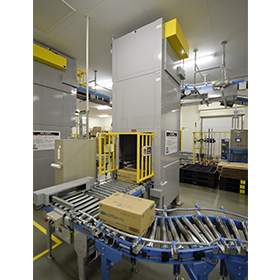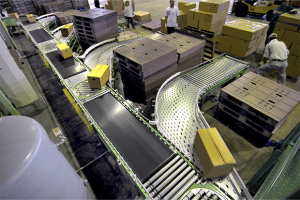Introduction
A conveyor belt monitoring system is an advanced technology designed to oversee the performance and condition of conveyor belts in industrial settings. These systems help detect wear, tear, and potential failures before they lead to costly downtimes. In industries such as mining, manufacturing, and logistics, efficient monitoring is crucial for smooth operations. As we enter 2025, significant advancements in monitoring technologies are expected to enhance predictive maintenance, efficiency, and overall operational safety.

How Conveyor Belt Monitoring Systems Work
Conveyor belt monitoring systems use a combination of sensors and data analytics to provide real-time insights. These include:
- Sensors and Real-Time Data Collection: Advanced sensors such as infrared cameras, acoustic sensors, and RFID tags continuously collect data on belt performance, wear, and environmental conditions.
- AI and Predictive Maintenance Integration: Artificial intelligence (AI) is increasingly being integrated into monitoring systems to predict failures before they occur, reducing downtime and improving efficiency.
- Key Components: Common components include vibration sensors, temperature sensors, and high-resolution cameras that work together to analyze belt health and detect abnormalities.
Benefits of Conveyor Belt Monitoring Systems
Implementing a conveyor belt monitoring system offers several advantages:
- Reduced Downtime and Increased Efficiency: Continuous monitoring helps identify issues before they escalate, preventing unexpected shutdowns.
- Cost Savings Through Predictive Maintenance: Proactive maintenance minimizes costly emergency repairs and prolongs the lifespan of conveyor belts.
- Enhanced Safety and Compliance: By identifying potential failures early, monitoring systems help reduce workplace accidents and ensure compliance with industry regulations.

Latest Trends in Conveyor Belt Monitoring (2025)
In 2025, conveyor belt monitoring technology is evolving with cutting-edge advancements:
- IoT and Smart Monitoring Systems: The integration of the Internet of Things (IoT) allows real-time connectivity and data sharing, improving decision-making processes.
- Machine Learning for Anomaly Detection: AI-powered machine learning algorithms analyze vast amounts of data to detect anomalies and predict failures with greater accuracy.
- Sustainability and Energy-Efficient Solutions: Eco-friendly innovations, such as energy-efficient sensors and AI-driven optimization, contribute to reducing industrial carbon footprints.
Industries That Benefit from Conveyor Belt Monitoring
Several industries rely on conveyor belt monitoring for efficiency and safety:
- Mining and Heavy Industries: Ensures continuous operations in harsh environments by detecting issues before breakdowns occur.
- Manufacturing and Logistics: Supports streamlined production processes and efficient supply chain management.
- Food and Pharmaceutical Industries: Ensures compliance with hygiene and safety regulations by monitoring belt conditions and reducing contamination risks.
Choosing the Right Conveyor Belt Monitoring System
When selecting a conveyor belt monitoring system, consider the following factors:
- Accuracy and Reliability: Choose a system with high precision and real-time monitoring capabilities.
- Compatibility with Existing Infrastructure: Ensure seamless integration with current conveyor systems.
- Cost and Maintenance Requirements: Balance initial investment with long-term benefits and maintenance needs.
- Leading Brands and Emerging Technologies: Research top providers and upcoming technologies to stay ahead of industry advancements.
Conclusion
The future of industrial operation monitoring is driven by AI, IoT, and energy-efficient innovations. As industries continue to prioritize efficiency and safety, adopting advanced monitoring solutions will become a necessity rather than a luxury. Companies that invest in cutting-edge conveyor belt monitoring systems in 2025 will benefit from increased operational efficiency, reduced costs, and enhanced safety standards.


